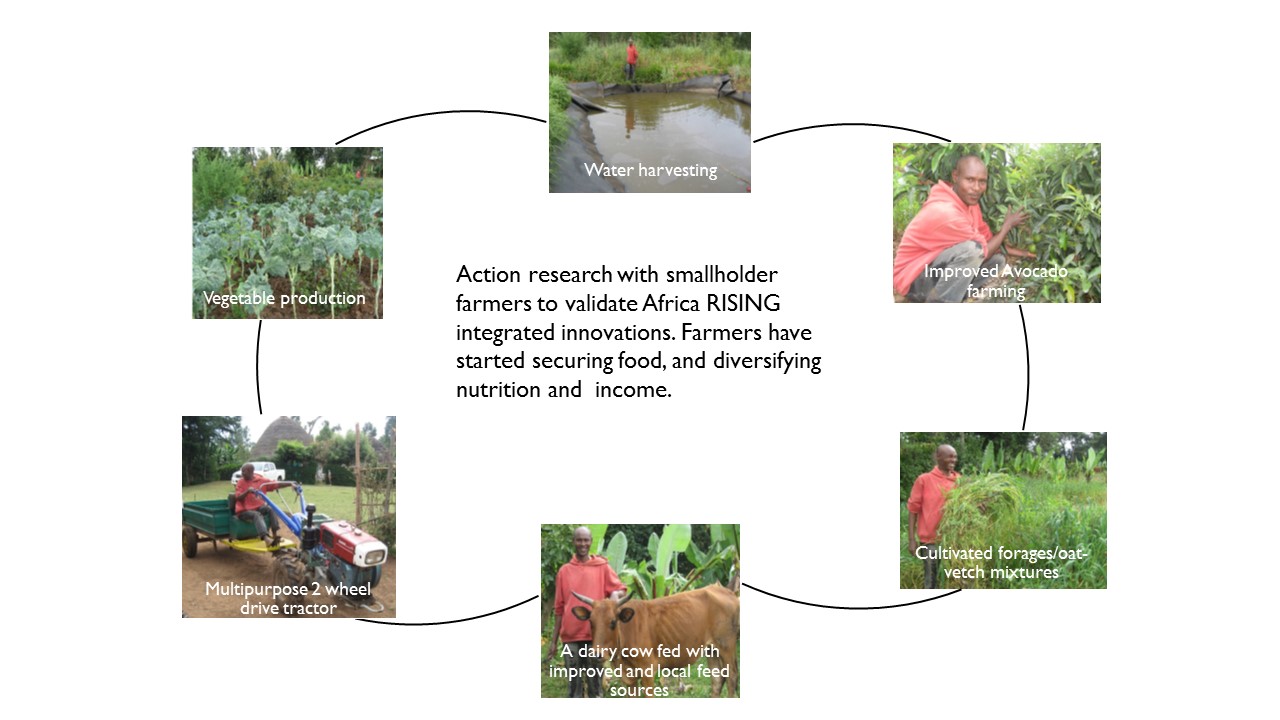Ethiopian farmers are intensifying and integrating Africa RISING interventions in a stepwise fashion
In Ethiopia, the Africa RISING project works in four regions (Amhara, Tigray, Oromia and SNNPR), mobilizing local partners, CGIAR centers and farmers around research directed to the priority issues and concerns of farmers.
Seventeen core action-oriented interventions have been introduced by the project and validated under diverse socioeconomic and agro-ecological conditions. Over the years, researchers engaged participating farmers to test options adjusted to the needs of households with differing capacities, approaches to risk and levels of resource endowment.
This allowed farmers to select interventions based on their interest and priorities. Between 2012 and 2016, farmers were involved in the selection and validation of the project interventions in a stepwise and iterative manner.
We learned that, for most farmers, integration of Africa RISING interventions does not happen all at once. Farmers prefer to test one or two technologies at a time to assess their feasibility and the benefits they provide.
Once they become confident with a limited number of interventions / technologies, they often proceed further along the intensification pathway by adopting further complementary interventions. This stepwise approach to intensification and integration appears to be the reality for many farmers.
For example, Alemu Kebede who farms in the Jawe Africa RISING research kebele, has now helped evaluate seven Africa RISING interventions, all of which were broadly complementary. Water harvesting is basic to him as, without it, he could not have made his first steps into intensification; namely producing vegetables, fruit trees, green forage for dry periods and consumption by livestock. His portfolio of Africa RISING innovation over the last three years is illustrated below:
 Kebede says “I only farm 0.5 ha but with the rainwater harvesting pond that my family constructed, I can irrigate 2000 square meters. I produced cabbages and carrots from a 100 square meter plot. I sold half of this for ETB 1000 (50 USD) and saved the rest for my family to eat. Using the Africa RISING interventions has taught me how to diversify my income and food sources through intensifying my home garden.” Intensification and diversification appears to be helping Alemu, his wife and his eight children to achieve food security from a small farm.
Kebede says “I only farm 0.5 ha but with the rainwater harvesting pond that my family constructed, I can irrigate 2000 square meters. I produced cabbages and carrots from a 100 square meter plot. I sold half of this for ETB 1000 (50 USD) and saved the rest for my family to eat. Using the Africa RISING interventions has taught me how to diversify my income and food sources through intensifying my home garden.” Intensification and diversification appears to be helping Alemu, his wife and his eight children to achieve food security from a small farm.
Story by Kindu Mekonnen,Peter Thorne and Workneh Dubale





Latest Comments